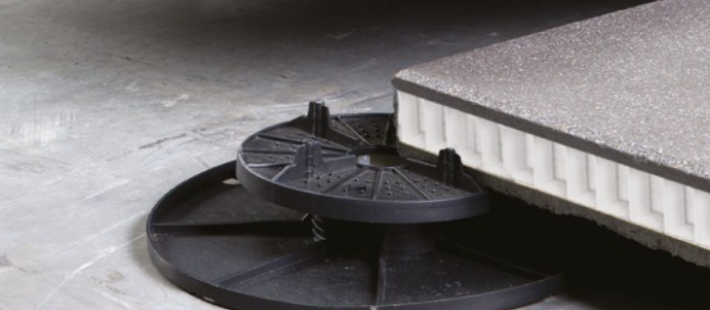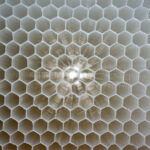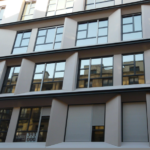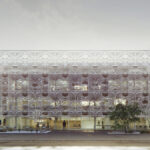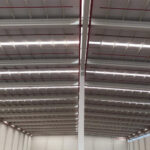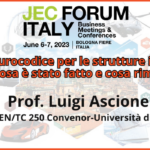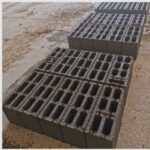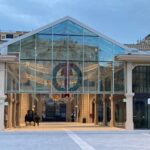
Fulvio Emanuele Doria, responsabile vendite SSocietà Emanuele Mascherpa spa
Combining honeycomb and polypropylene allows materials to be lighter while increasing their mechanical properties. Nidaplast, distributed in Italy by Mascherpa spa, offers a range of core materials all characterized by a similar structure: hexagonal honeycomb with a diameter of 8 mm in polypropylene, closed by a protective plastic film and a non-woven polyester fabric. Both the film and the non-woven fabric are thermally welded to the honeycomb, ensuring a hermetic seal between the various cells.
All Nidaplast materials are:
- lightweight
- rot-resistant
- impact-resistant
- have good thermal and acoustic insulation properties
- and are recyclable (thus also allowing for a sustainable choice).
The range is also available in different variants that may concern the density of the product, the thickness of the protective film, and the finishes.
Sandwich panels
Nidaplast cores allow the production of lightweight and structural sandwich panels. The principle of the sandwich structure is similar to that of the metal beams used in construction. The idea is to separate the applied skins in order to exploit the moment of inertia; this separation aims to minimize the added weight (which is achieved by using the lightweight structure of the honeycomb), while increasing the rigidity of the finished panel.
Sandwich panels made with Nidaplast cores are used in many industrial sectors; not only transport and nautical, for example, but also construction, in different application areas.
Facades converings
First of all, it is possible to create aesthetic coverings for facades and ventilated facades. By applying reduced layers of fiberglass, aluminium, or marble (or other materials), it is possible to modify the aesthetics of a building, with load-bearing or self-supporting structures, offering ample design possibilities for designers, providing high structural rigidity, weather resistance (wind, rain, sudden changes in temperature), and ease and speed of installation.
An extremely important factor is that this embellishment operation avoids structurally weighing down buildings: this makes it possible, for example, to recover existing buildings, giving them a new image and a new aesthetic character, without compromising their solidity, thanks to the lightweight Nidaplast polypropylene honeycomb.
The panels can also be made with dimensions larger than 3.5m2 and have a greater acoustic insulation power compared to panels made with foam, in case of rain. The external insulation determined by the ventilated facades allows a second waterproof skin to be created around the building, protecting it from external dangers and making the insulation efficient in terms of both heat and sound. Sandwich panels with Nidaplast effectively treat thermal bridges, protect the building from weather and humidity, and limit condensation problems; furthermore, the ventilated facade will reduce CO2 emissions and heat dispersion through the facades.
But that’s not all: the ever-increasing need for safety in the building sector, especially in the field of fire/smoke, does not limit the use of the Nidaplast range of cores. There is also a Fire Retardant version which, with the appropriate skins, allows regulations to be complied with.
Roofs
Nidaplast can also be used to create roofs, in combination with fiberglass and resin. In this case too, the freedom of imagination for architects and designers is wide; in association with lightness but also resistance to impact and weather, Nidaplast is a good solution for creating large self-supporting surfaces, limiting supports and allowing, thanks to the ease of shaping, to create roofs and coverings with a new and refined design.
Doors
Nidaplast range does not only apply to the exterior of buildings; it can be used in various ways. Doors, both for exterior and interior, can be made with Nidaplast used as a core material. Especially for external doors, not only does it result in improving weather resistance (or at least to water and humidity, think of sports centers), but it also greatly reduces the bilamina effect, which occurs when there is a large temperature difference between the internal and external frame (e.g. due to intense sunlight).
The frame expands and can cause distortion of the door or difficulties in opening and closing. The lightness of the door also helps avoid hinge and frame stress problems, and the presence of Nidaplast on the outside contributes to greater resistance to impacts and vandalism. Even when coated with a skin (wood, aluminium, plywood), doors made with Nidaplast cores are easier to move thanks to their high lightness and provide additional functions such as vibration damping and good thermal and acoustic comfort.
Internal partitions
Furthermore, Nidaplast sandwich panels find application as internal partitions, whether they are dividing walls for toilets and changing rooms that require water and humidity resistance, fixed walls that must resist over time, or movable or mobile walls that are easy to move and dismantle.
Elevators
Elevators are necessary in buildings: the Nidaplast honeycomb core sandwich panel is an ideal product that enters the manufacturing and renovation process of these, responding to technical and mechanical issues. Its reduced weight increases the number of authorized users in the elevator and reduces the energy requirements for the system to operate; its self-supporting character allows for mechanical reinforcements to be reduced as much as possible. The sandwich panel offers lightness, resistance to water and humidity, acoustic and thermal insulation, and mechanical performance.
Flooring
Regarding flooring, Nidaplast can be used as a support with acoustic insulation or as a shock absorber for private or professional building floors under construction or renovation, for example, by applying lightweight marble. This allows for a perfectly aesthetic result, avoiding waste of stone material.
Additionally, Nidaplast is translucent, if backlit, with most marbles: this allows designers to create sophisticated interiors with special aesthetic effects. For indoor sports floors, since they are easy and quick to install, Nidaplast polypropylene honeycomb panels are often used to set up sports flooring suitable for multipurpose halls (basketball, handball, volleyball, badminton, table tennis, skating, dance). In combination with other materials (foam, wooden flooring), they contribute to good shock absorption (balls, falls, jumps, etc.). Moreover, depending on the conditions of the supporting terrain, the honeycomb will allow defects of the ground to be eliminated.
A classic application of the core is that of floating flooring, consisting of a series of panels or tiles placed on uprights, which, in turn, are placed on a floor located at a lower level. The height of these supports is generally adjustable. This type of floor system is very common in offices, commercial activities, and in any space under which there are multiple electrical cables, pipes, heating and air conditioning ducts, crawl space, etc.
Prefabricated bathrooms
If we consider the need for the presence of electrical cables and pipes, but in a vertical direction, Nidaplast is often used in the construction of prefabricated bathrooms. Tiles are industrially applied to Nidaplast panels, along with necessary finishing. The four walls, together with the floor, are delivered stacked on top of each other, allowing for the quick installation of a bathroom with excellent aesthetic results, but most importantly, in terms of maintenance; in case of problems (such as water leakage), not only will the panel resist contact and prevent mould formation, but it will also avoid the need for masonry work: it will be sufficient to remove the panel and repair the pipe. Many hotel chains have chosen this solution.
Building decoration
In terms of building decoration, Nidaplast panels are often used as a support to reduce the weight of natural or artificial stone kitchen countertops while maintaining their strength and rigidity. It is possible to create domestic, office or shop furniture. The good mechanical properties and excellent dimensional stability of sandwich panels made with the Nidaplast honeycomb core can be combined with decorative laminates of all kinds, to make designers free in the creation of their designs. In the finished version with skins previously glued to the core (Nidaskin), or in the single core version (Nidaplast, Nidapan), all possibilities are available. It is also possible to create designer furniture in concrete, for a lighter, more portable but equally solid version of the same.
Swimming pools
Lastly, in the most elegant buildings in cities, but also obviously in country or seaside homes, the construction of swimming pools is becoming increasingly widespread. To ensure the strength of the bottoms and walls, which are subject to strong internal and external pressures, as well as any pressure from the groundwater, Nidaplast cores can be successfully used as vertical and horizontal support reinforcements.
Honeycomb panels combined with the polyester structure of the pool will play their role as compensating levers or arms as soon as the pool is filled with water, eliminating the drum skin effect on the bottom. In fact, with the help of the water pressure exerted on the bottom, the walls, supported by these reinforcing structures, tend to push inward, creating a counter-thrust that cancels out the lateral pressure of the contained water. Horizontal reinforcements provide a rigid connection between each vertical reinforcing element and thus prevent any horizontal deflection. Thanks to the reinforced bottom that makes the final product less fragile, it is also possible for pools to be stacked during construction, making logistics easier.


